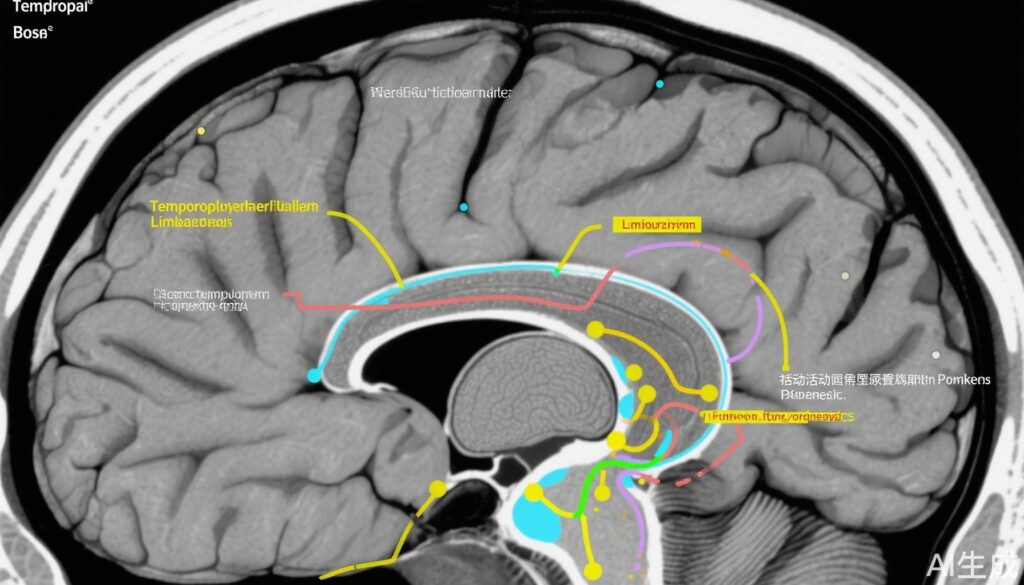Highlight
– Regular physical activity in patients with early Parkinson disease (PD) is associated with slower cortical thinning and subcortical volume loss in brain regions critical for cognition.
– Temporoparietal cortical regions and limbic structures such as the hippocampus and amygdala show reduced neurodegeneration linked to higher physical activity.
– Slower deterioration in these brain areas mediates the preservation of cognitive functions, particularly memory and attention.
– These findings provide strong evidence supporting physical exercise as a neuroprotective intervention to delay cognitive decline in PD.
Study Background and Disease Burden
Parkinson disease is a progressive neurodegenerative disorder primarily characterized by motor symptoms but frequently complicated by cognitive impairment. Cognitive decline in PD markedly impacts quality of life and caregiving burden. While pharmacological treatments target motor symptoms, effective strategies to slow neurodegeneration and cognitive decline remain limited. Emerging observational data suggest that physical activity may improve clinical and cognitive outcomes in PD; however, the biological underpinnings of these benefits have not been well elucidated. Specifically, whether regular physical exercise slows structural brain degeneration, a core neuropathological feature in PD, remains largely unexplored. Understanding this relationship addresses an unmet clinical need to identify modifiable lifestyle factors that could delay disease progression and preserve cognitive function in early PD.
Study Design
This longitudinal, observational cohort study utilized data from the Parkinson’s Progression Markers Initiative (PPMI), an extensive multicenter prospective study. Inclusion criteria comprised patients with early PD who underwent serial assessments of regular physical activity using the Physical Activity Scale for the Elderly (PASE) and had brain MRI scans at a minimum of two time points over a four-year follow-up period. The study population included 120 patients (mean age 60.8 years, SD 9.3; 33% women). Structural neuroimaging focused on measuring cortical thickness in regional cortical areas and volumes in subcortical limbic structures via established neuroimaging pipelines. Statistical analyses employed multivariate linear mixed-effects models to evaluate the effect of physical activity levels over time on the progression of MRI-derived brain structural parameters. Additionally, mediation analyses using nonparametric bootstrap procedures assessed whether longitudinal structural brain changes mediated the relationship between physical activity and cognitive outcomes.
Key Findings
The study demonstrated a significant association between higher average physical activity over time and slower neurodegeneration in specific brain regions most vulnerable in PD. Notably, key temporoparietal cortical areas—including the lateral temporal cortex, fusiform gyrus, parahippocampal gyrus, and inferior parietal cortex—exhibited reduced cortical thinning (p < 0.05) in more physically active patients. In parallel, hippocampal and amygdala volumes declined more slowly with increased physical activity (p < 0.05).
Importantly, the study integrated cognitive assessments focusing on memory and attention domains, which decline commonly in PD. Mediation analyses revealed that slower decreases in temporoparietal cortical thickness partially mediated the positive effect of physical activity on memory (Hopkins Verbal Learning Test; β=0.06, p=0.05) and attention (Symbol Digit Modalities Test; β=0.04, p=0.017). Similarly, preservation of hippocampal volume mediated the benefit of physical activity on attention (β=0.03, p=0.016).
These findings establish a mechanistic link suggesting that regular physical exercise slows neurodegeneration in specific brain regions, contributing to preserved cognitive function in early PD.
Expert Commentary
This study by Diaz-Galvan et al. adds critical neurobiological evidence supporting the clinical observation that physical activity is beneficial in PD. By leveraging longitudinal MRI and robust statistical models, the authors convincingly demonstrate that exercise-related cognitive benefits are underpinned by slower structural brain deterioration, especially in temporoparietal cortices and limbic structures integral to memory and attention. These findings align with preclinical data indicating neuroprotective effects of exercise via enhanced neurotrophic factors and vascular health.
Clinicians should consider prescribing structured physical activity programs early in the disease course, as preserving cortical and subcortical integrity might translate into sustained cognitive function and slower clinical progression. Limitations include observational design precluding causal inference and relatively homogeneous early-stage cohort. Future randomized controlled trials with multimodal imaging and biomarker integration are warranted to further delineate exercise’s neuroprotective mechanisms and optimal intervention parameters.
Conclusion
Regular physical exercise is associated with slower longitudinal neurodegeneration in temporoparietal and limbic brain regions in patients with early Parkinson disease. These structural brain benefits partly mediate the preservation of memory and attention functions over four years. This study reinforces the role of physical activity as a key modifiable lifestyle intervention to delay disease progression and cognitive decline in PD. Incorporating structured exercise into early PD management may improve long-term clinical outcomes and quality of life. The findings underscore the urgent need for further interventional research to optimize exercise prescriptions targeting neuroprotection in Parkinson disease.
References
Diaz-Galvan P, Franco-Rosado P, Silva-Rodriguez J, Castro-Labrador S, Labrador-Espinosa MA, Muñoz-Delgado L, Grothe MJ, Mir P. Association of Physical Exercise With Structural Brain Changes and Cognitive Decline in Patients With Early Parkinson Disease. Neurology. 2025 Sep 9;105(5):e213932. doi: 10.1212/WNL.0000000000213932. Epub 2025 Aug 6. PMID: 40768688.


